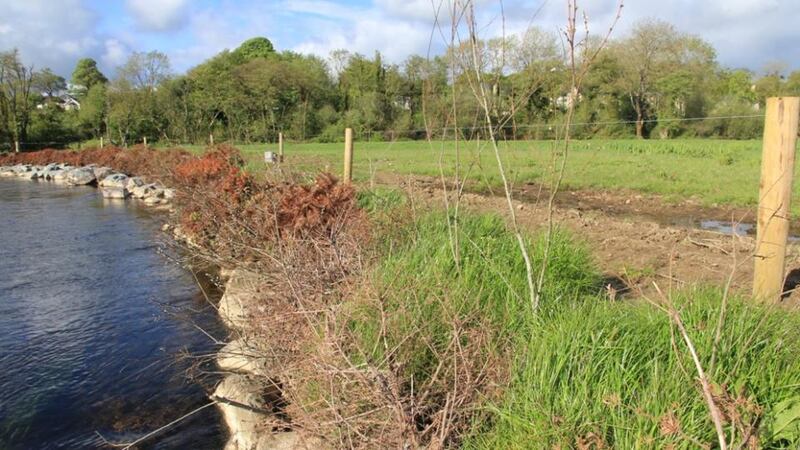One of the great insights of ecology is that everything in an ecosystem is ultimately connected with everything else. A similar principle applies to human societies, succinctly expressed long ago in John Donne’s declaration that No man is an island.
These ideas of interconnectivity, ecological and social, surfaced on a visit to IRD Duhallow, a remarkable community-based integrated rural development company that has operated in northwest Co Cork and in neighbouring parts of Co Kerry since 1989.
I was visiting to learn from Fran Igoe, a zoologist, about the organisation’s restoration of the upper tributaries of the River Blackwater by reducing riverbank erosion. The aim is to foster improved habitat for the endangered freshwater pearl mussel, as well as for salmon, otters and kingfishers.

The barony of Duhallow is rich in cultural heritage, a heartland of both the GAA and, especially in the Sliabh Luachra district, of traditional music. And it is rich in biodiversity, from the pearl mussel under water to hen harriers patrolling its upland skies. But it has long been poor in economic terms, and blighted by rural isolation. The development company was set up by four local businessmen to breathe life back into a community they believed was dying.
The chairman of its environmental working group, a retired forester named Michael Doyle, makes it clear that the company today has become a kind of socio-ecosystem, weaving together connected projects ranging from fostering local food businesses to meals on wheels, from furniture restoration to gardening as mental-health therapy, from restoring the smokehouse at its impressive Georgian headquarters in Newmarket to restoring riverbanks on its farms.
Many of the projects are staffed through community employment initiatives such as Tús and the Rural Social Scheme, and the latter supplies the labour for much of Igoe’s restoration work.
A key problem facing the Blackwater special area of conservation is excessive siltation, which smothers the beds of the rare pearl mussel, inhibiting reproduction. It also clogs the clear gravel beds that salmon need to spawn. And this has an impact on otters, kingfishers and other wildlife.
The causes are twofold: silted run-off due to upland forestry operations and to agricultural drains lower down; and the erosion and collapse of riverbanks by trampling cattle. New methods of trapping silt in drains are reducing the run-off, but eroding riverbanks pose trickier issues, socially as well as ecologically.
Mindful of the resentment the designation of special areas of conservation (SACs) has sometimes aroused in farming communities, Igoe invested a lot of time in discussing the issues with farmers before proposing action, and always sought their advice. “We tried to present the SAC not as an imposition but as a positive, attracting tourists to the special qualities of the area,” he says. He also sought to encourage farmers to enjoy these qualities, with free angling classes for local landowners, many of whom had never fished in their own river. They had often seen it not as a valuable amenity but as an obstacle to moving cattle.
A wildlife-mapping project led by schoolchildren raised awareness of species in the area. Local people recycled 1,000 Christmas trees through the project, which uses them to stabilise riverbanks and trap silt, effectively rebuilding them.
Farmers were already aware that eroded banks can mean permanently flooded fields, losing grazing land and reducing eligibility for EU payments. Initial reticence turned to active support for the river restoration. After recent rain, the River Dalua brimmed against the banks along a tight meander. Igoe and four farmers, one of them Tony Ahern, who had worked on the bank under the Rural Social Scheme, were keen to see how their work was standing up.
The bank restoration had been a complex operation: buttressing the inner bank with logs; putting boulders along the riverbed adjacent to the bank; and laying down a mesh of Christmas trees, screwed to biodegradable batons, along the outer bank. Finally, willow stakes, cut from a nearby hedgerow, were planted along the bend. If they grow well, their root balls will be an essential element in binding the bank.
“That one is definitely growing. You couldn’t deny that,” says Ahern, pointing out several healthy fresh sprouts on one of the thicker stakes.
But there are problems, too. The river is flowing harder than expected, and at some points it diverts under rather than around the boulders, tearing into the riverbed, so more will have to be set farther out.
The formidable power of water is visible in the massive debris, including substantial tree trunks, it has thrown on to the bank. Ahern’s advice has been crucial here, in creating a single-strand electric fence with break points that can yield to the debris.
Was Ahern reluctant to allow a conservationist to undertake all this work on his land? “The river was eating lumps out of my field,” he says. “I had to do something, but I couldn’t have coped with it myself. Not just with the labour, but with all the regulations you have to go through now to change anything . . . Fran understands these things. I’m happy to let him get on with them.”
Walking back, Dan O’Donoghue, one of the Rural Social Scheme workers, says he values the scheme for the extra money, which enables him to continue farming. He mentions other benefits, including the meaningful work, and companionship. “You’d be for the birds if you were alone on your farm all day.”
In other words, everything is connected.
See irdduhallow.com, duhallowlife.com
Paddy Woodworth is the author of Our Once and Future Planet. See
iti.ms/1jeTvVA







